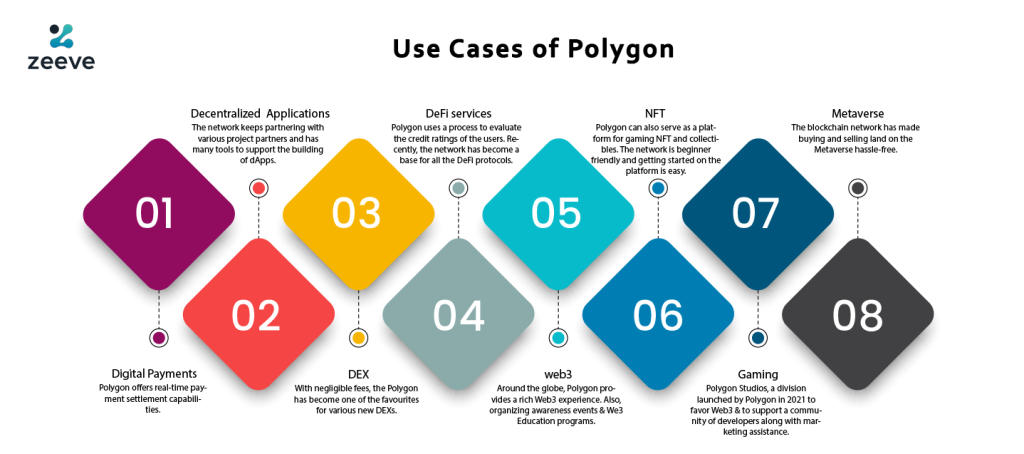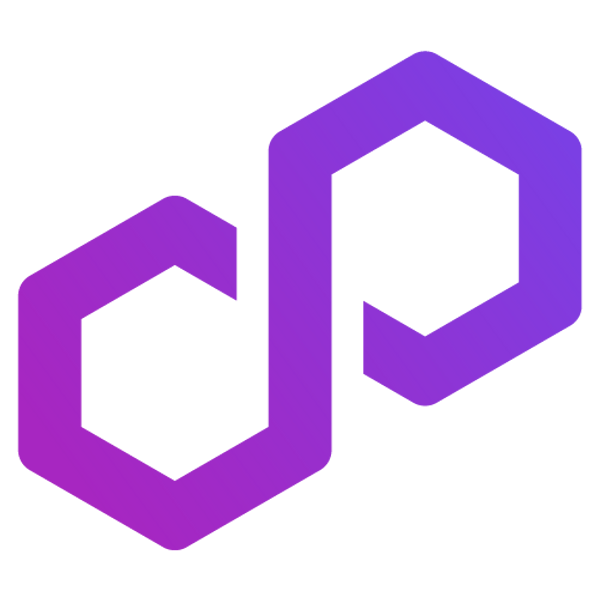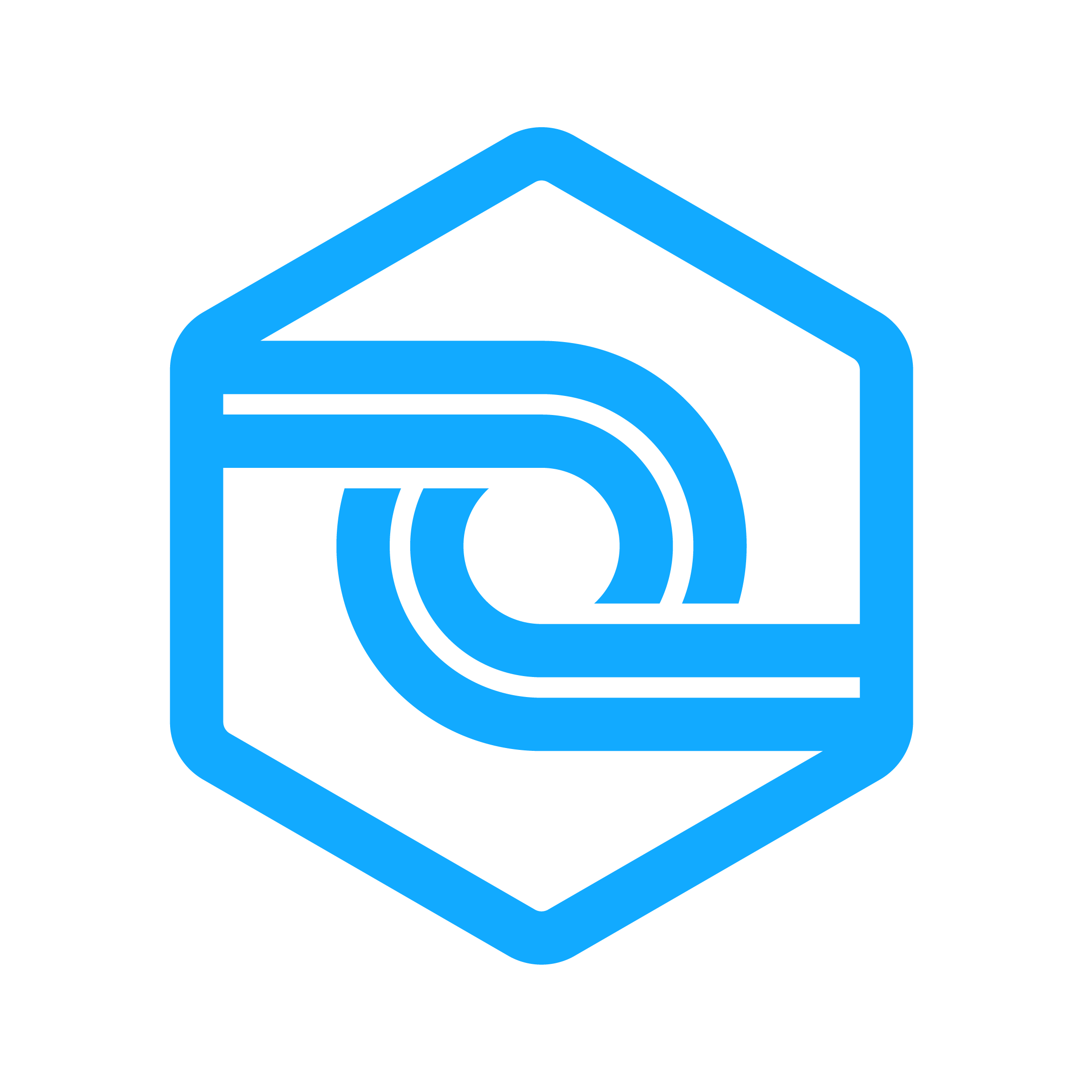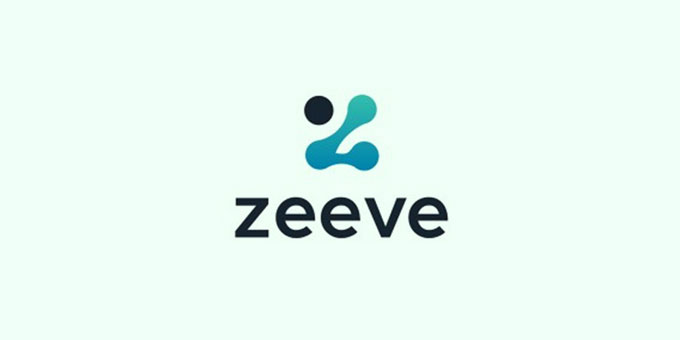Blockchain technology and the massive usage, and scale of recent developments in this disruptive domain bring with it many huge benefits as well as many challenges. The improvements to efficiency and business performance are remarkably clear thanks to the decentralized system. At the same time, there have been many setbacks when it comes to blockchain adoption by enterprises, which need solutions for a more efficient and scalable system. Increased volume of transactions and the problem of network congestion have called for attention to protocols that improve efficiency and promote scalability. Layer 2 scaling solutions are an answer to the pertinent problem of scalability. The Polygon Network is a distinguished example of a Layer 2 solution. Keep reading our blog guide on how this type of network holds great relevance moving forward and how Polygon use cases have expanded over a short span owing to its problems that resolve.
What is Layer 2?
Scalability is a network’s ability to support more transactions and nodes in a network. The Polygon node is a layer-2 solution which as the name implies, is the second layer that works on the main layer. It eradicates the two significant problems related to blockchain network: the higher transaction fees and the heavy network congestion.” Three scalability techniques used in Polygon to improve the network issues are:
Zero Knowledge-Rollups: To decrease network congestion multiple transactions are rolled into a single batch. A specific cryptographic technique is used to instantly prove that any transaction is valid by communicating via a cryptographic function.
Optimistic Rollups: It also instantly proves that any transaction is genuine by processing it off-chain. However, here there is no validity-proof which means no cross-checking of the information by cryptography.
Plasma Chains: Here, a child-parent relationship is established with the Ethereum mainnet. The plasma chains efficiently execute transactions off-chain and use fraud proofs similar to optimistic rollups.
Understanding Layer 2 Solutions
Polygon Network’s applicability becomes more comprehensible when the meaning of layer 2 solutions are encapsulated. A layer 2 solution essentially stands for a blockchain network working parallel to a main blockchain network. Regarding Polygon, the main blockchain is represented by the Ethereum. The layer 2 blockchain works side by side to the main blockchain network and hence the layer 2 blockchain processes transactions in parallel with the primary blockchain. As a consequence, you can still enhance transaction speed and transaction costs by lowering network congestion.
Significance of Layer 2 solutions
The Layer 2 solutions are a key part of any network infrastructure. They provide a way for devices to correspond with each other for exchanging data and tokens without relying on the higher layers of the network. They assist in interchanging transaction information to the parallel blockchain network from the main blockchain. Further, this helps in exchanging transactions at a fraction of the actual value with greater speed and without risks to Ethereum mainnet. Polygon supernets are a type of layer 2 solution that enhances the network’s performance. The appeal of Polygon blockchain applications is related to the technology’s ease of development.
Ethereum, the biggest blockchain platform, makes building decentralized applications simple. It has a wide variety of advantages and also it features a robust infrastructure. Yet, Ethereum’s reputation as a solution for developing dapps, and recently, DeFi applications, has brought the blockchain to the system’s brink. Ethereum’s attributes have filled the network by means of transactions, causing the network to become overloaded. Now, the increased congestion results in inflated fees that are becoming more expensive with severe congestion. Hence, the emergence of layer two solutions such as Polygon has proved to be highly significant for the growth of DeFi because of the capacity for scale and interoperability.
Working of Polygon
Before delving deeper into the use cases of Polygon, one also needs to understand the working model of this popular layer 2 blockchain solution. Just like the other protocols based on the proof-of-stake model, understanding the working of Polygon requires comprehending the critical components such as the network nodes, staking, governance and also other operations.
Proof of Stake
Polygon
network functions on the Proof of Stake (POS) consensus mechanism. Proof of Stake is characterized by the use of a series of node validators to confirm and verify various transaction blocks. The different use cases of Polygon further affirms proper use of the processing power for the creation of the new blocks.
In the consensus of Proof of Stake, the token holders are responsible for making the decisions about transactions, validating them, and verifying them. Proof of Stake algorithm offers people using MATIC tokens the potential for obtaining rewards, as the permissible roles are validators and delegators. Matic has multiple options for appraising the platform, as users have the ability to become a validator or delegator.
One needs a full blockchain node devoted to validating transactions in order to become a validator, and that node would earn a percentage of the transaction fees successfully verified and validated. In return for fulfilling the task of validation and verification of each transaction, validators will be eligible to earn newly minted MATIC tokens. Validators are liable to be penalized if they commit errors and mistakes that can cost them MATIC tokens, which can be either slashed or even destroyed.
The delegators in the use cases of Polygon blockchain are a specific variant of public node network and they are eligible to receive the MATIC of other individuals and use it for entering into transactions experimentally. The power vested in the hands of delegators is directly proportional to the stakes delegated to them. There is no complication for those delegators as is the case for node validators.
In order to gain a deeper understanding of how Polygon functions, studying the Proof of Stake Bridge is also critical. It provides a smooth conduit for assets moving back and forth among two great blockchain networks. This POS Bridge is nothing but a group of smart contracts that assists transfer assets from Ethereum to the side chain of Polygon.
The Polygon uses the PoS Bridge to transfer assets from Ethereum to the Polygon. Since the bridge is used for accessing decentralized applications and DeFi platforms, you will have to pay the transaction fee to access your credits.
In order to access cheaper Polygon Network transactions, you will have to pay a fee to access the Polygon Bridge. Polygon Network makes use of an ETH bridge and the MATIC (ERC-20) or ERC-721 token bridge.
Polygon Use Cases
1. Digital Payments
Polygon offers real-time payment settlement capabilities. Digital payments play a huge role for dApps, and thus it is essential to speed up the payments. The Polygon network supports the improvement in speed by using a software development kit (SDK) and an API integration. The blockchain network plans to revolutionize payments in three phases. First of all, payments will be made available for Ethereum. Further, support will be provided for cross-chain multi-asset token transfer will be. Lastly, atomic swaps for various liquidity providers. The focus is to support fiat liquidity and introduce a fiat-based pay system.
2. Decentralized Applications
Polygon is home to the biggest projects such as Aave, OpenSea, and Uniswap. The network is known for swift transaction speed, minimum fees, & carbon neutrality. The Polygon provides corporations with a gateway to Web3. The blockchain network has also teamed with the Axelar network for secure cross-communication. The interoperability allows for the creation of specific, scalable blockchain networks. The dApps can transfer assets in one click. The network keeps partnering with various project partners and has many tools to support the building of dApps.
3. DEX
The Polygon can improve the settlement time for the decentralized exchanges. ComethSwap, Quickswap, and many other notable DEX use Polygon to settle transactions. Cost-effective trading is available on these platforms because of Polygon and the exchanges opting for Polygon have witnessed high-volume transactions and user activity. Polygon uses side chains to balance the exchange’s transaction load, thereby improving transaction speed. With negligible fees, the Polygon has become one of the favorites for various new DEXs.
4. DeFi services
Polygon is a top competitor to some of the huge blockchain networks such as Ethereum and BSC. For the DeFi services, Polygon uses a process to evaluate the credit ratings of the users by assessing the entire transaction ratings. Many of the lending applications such as Aave, OVIX, and Market.xyz are a part of the Polygon network. The market size of AAVE v2 has a $489 million market on Polygon. The users also receive a high annual percentage yield on Polygon. Although the loan rate on AAVEv2 is still costly when buying at a stable rate, then it is cost-effective. Recently, the network has become a base for all the DeFi protocols.
5. Web3
In Sep 2022, Starbucks joined hands with Polygon to provide a Web3 experience to their loyalty program members and employees in the US. The implementation of Web3 will give an immersive experience to users. The network plans to become carbon-negative by the end of the year. In the ongoing “Web3: Made in India Tour” the company plans to integrate Polygon ecosystems with hackathons, community gatherings, and much more. Around the globe, Polygon provides a rich Web3 experience. Also, organizing awareness events & We3 Education programs.
6. NFT
Polygon supports NFT trading which occurs at a low transaction cost at NFT marketplaces such as OpenSea. Polygon can also serve as a platform for gaming NFT and collectibles. The network is beginner friendly and getting started on the platform is easy. Subsequently, there is a Polygon bridge which is vital to connect two blockchain networks. The minting process is very similar to Ethereum. To work on the Polygon network and to pay fees in the native token MATIC you can configure the Metamask crypto wallet.
7. Gaming
Polygon Studios, a division launched by Polygon in 2021 to favor Web3 & to support a community of developers along with marketing assistance. Blockchain gaming is booming currently and the Polygon is considered better for gaming as it provides scaling solutions. Therefore, there is an improvement in the performance of the games. Due to scaling, the combination of the Ethereum network and Commit Chain resolves the major concerns of slow transactions and network latency.
8. Metaverse
The browser-based 3D platform such as Decentraland, Sandbox were once a part of the Ethereum blockchain but were later implemented on Polygon. The blockchain network has made buying and selling land on the Metaverse hassle-free. The transactions are user-friendly on the Polygon network. Recently, Polygon also became the first network to host the airport metaverse. The update is considered a game-changer for all MATIC holders. The metaverse future will be empowered by all the experiences of the physical world.

Summing it all up
Want to integrate the Polygon node into your existing system? A polygon blockchain deployment company such as Zeeve will help you to achieve your goals. The features of Polygon (MATIC) are web-developer friendly because the language here is Solidity same as that of Ethereum. The Polygon blockchain network is the most resource-efficient for dApps. The network is 100% ready to onboard on-chain applications and off-chain applications. Regarding the future of Polygon, it is giving good competition to other networks and values a decentralized network without sacrificing on security.
Partner with Zeeve
Zeeve, a blockchain infrastructure platform, will solve all of your concerns regarding the Polygon node. Setting up the Polygon node to scale up the transaction with added security and privacy will be worth the rewards.
We help enterprises and Blockchain startups to build, deploy and manage their blockchain network. Our platform aids multiple Blockchain protocols with advanced analytics and monitoring. To learn more about Zeeve, join us on Twitter and Telegram.






















